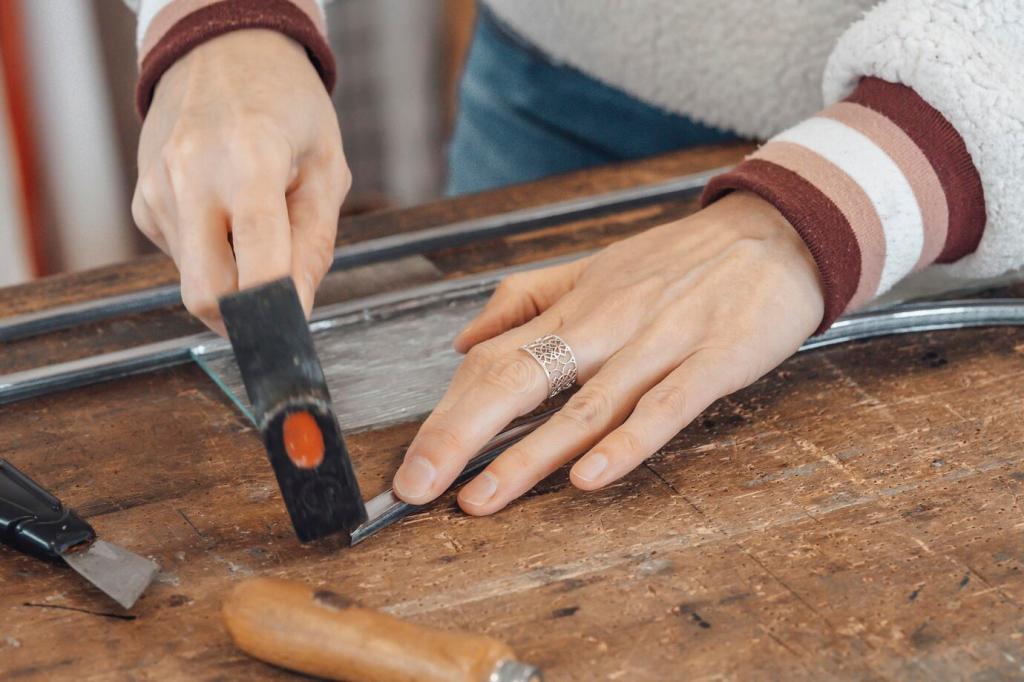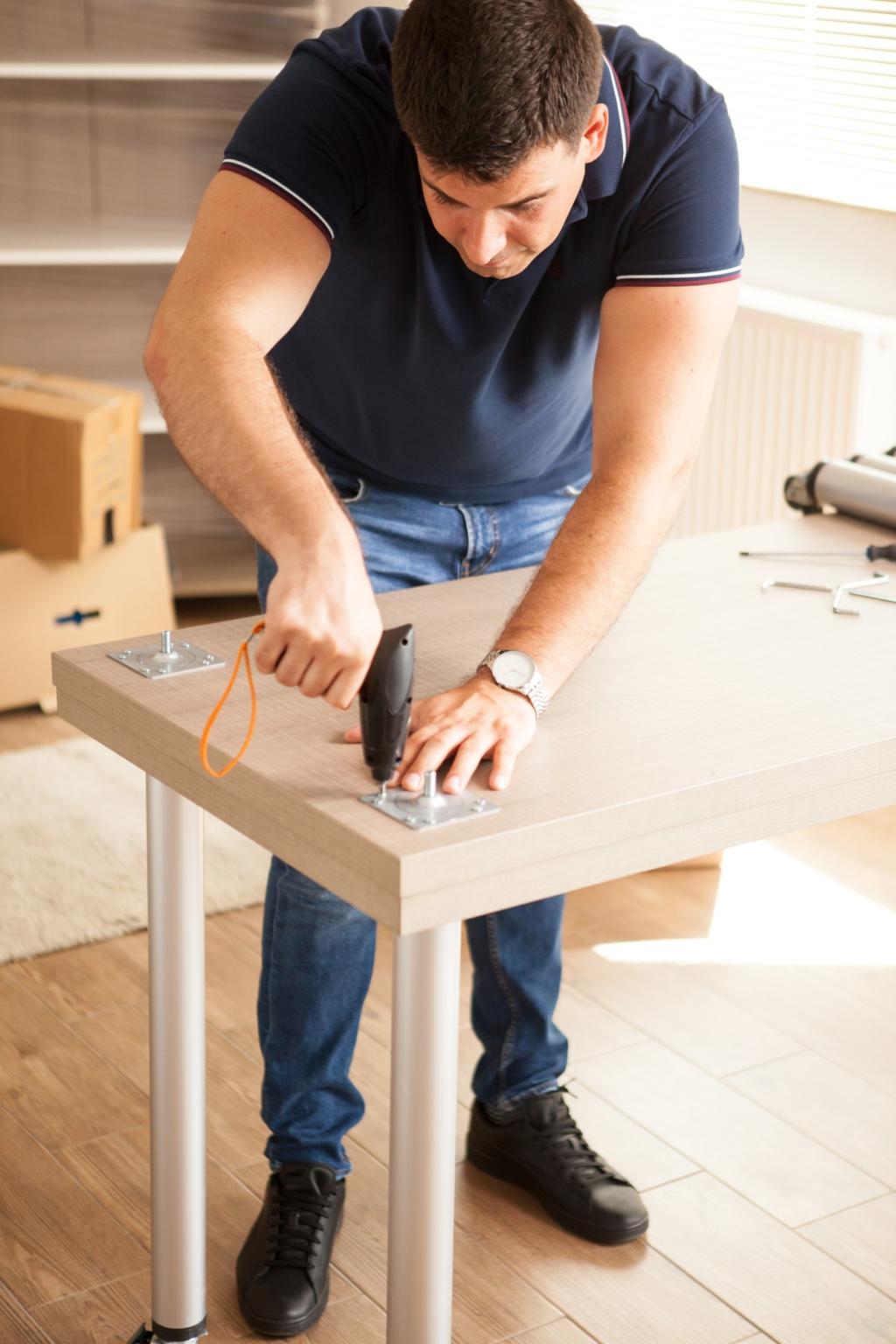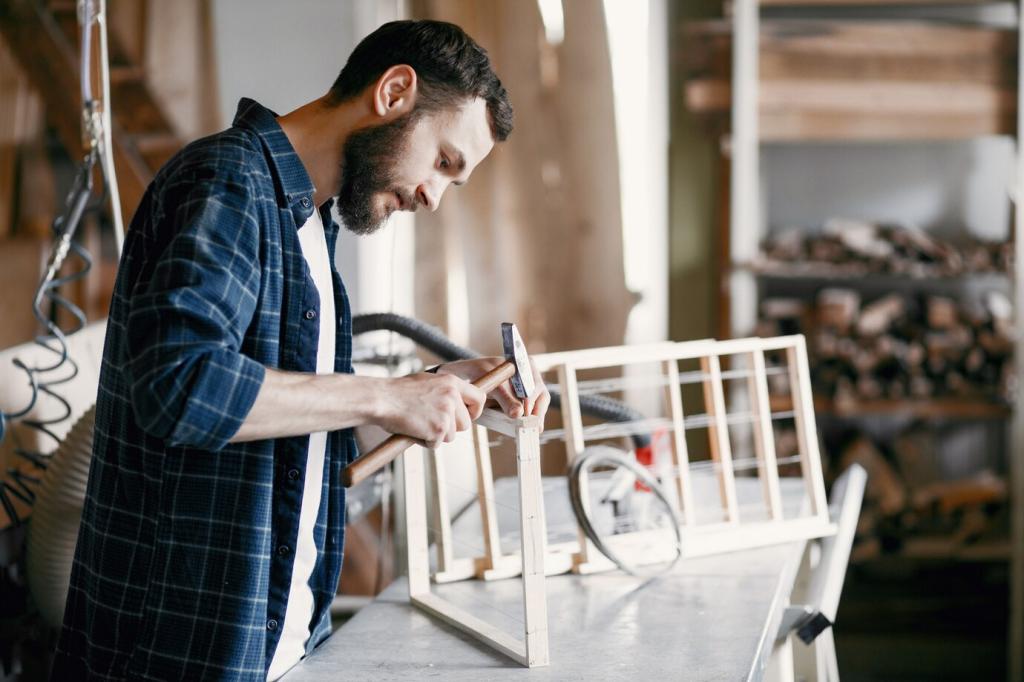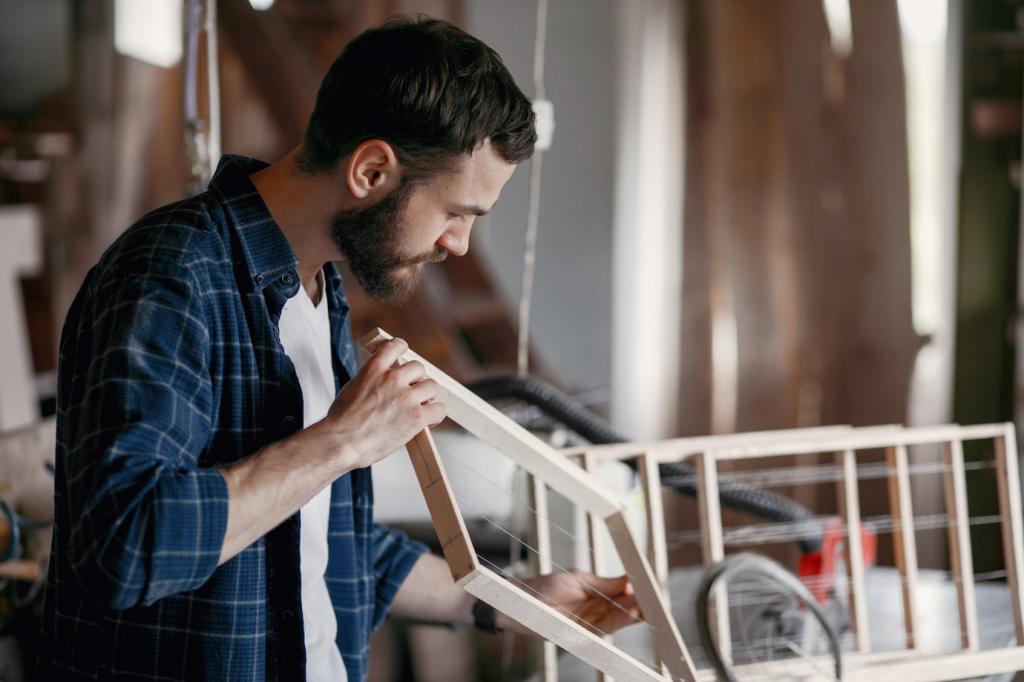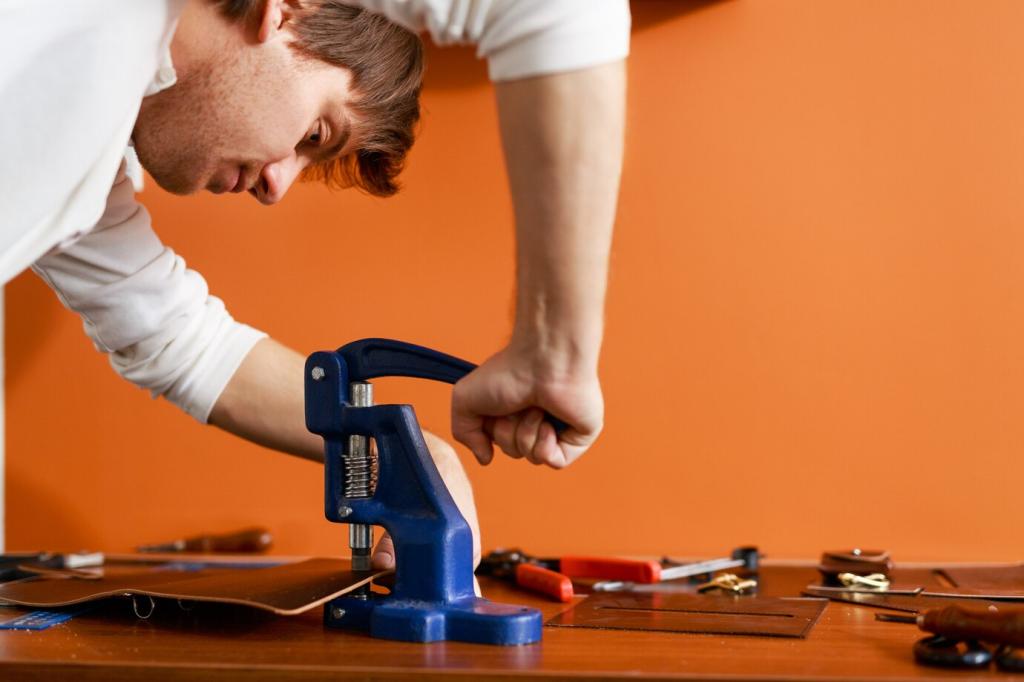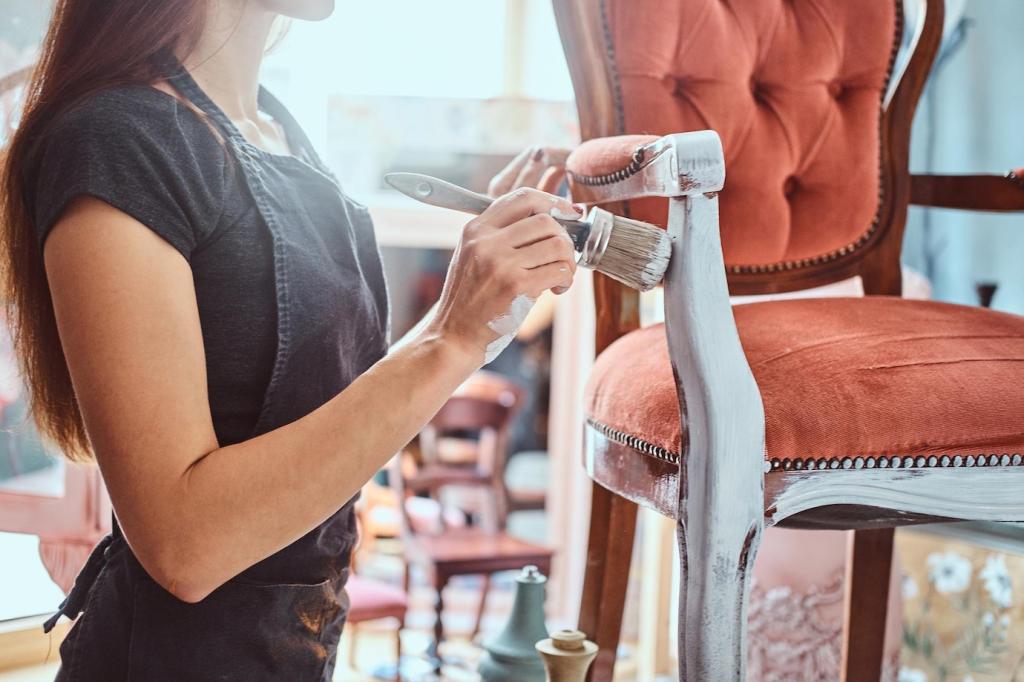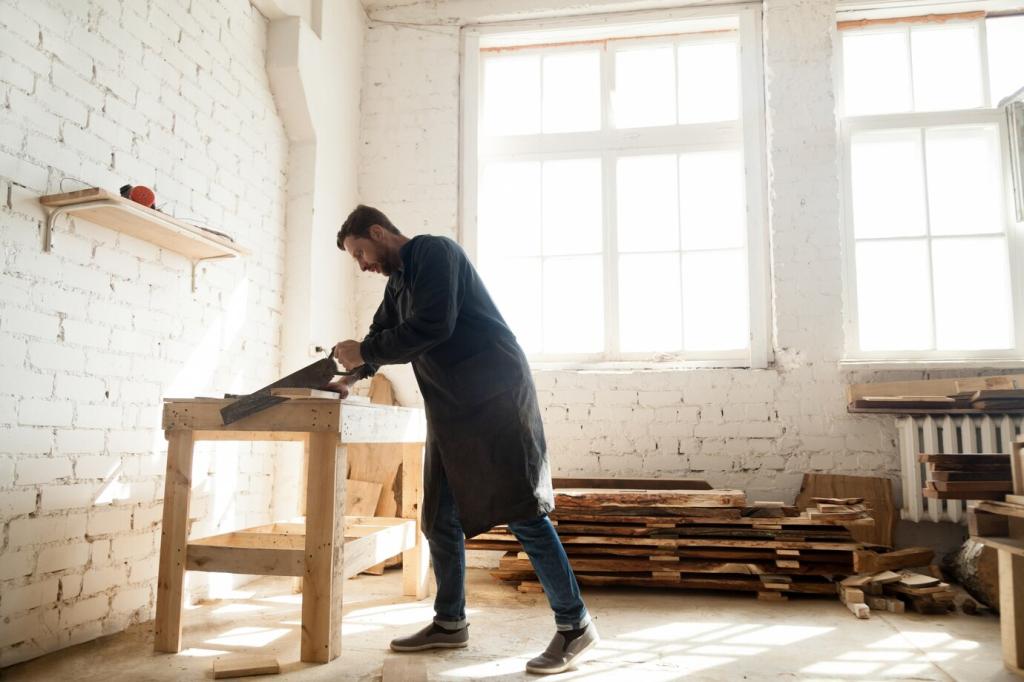Assess Before You Touch: Reading the Story in Wood and Wear
Dovetails, saw marks, and screw types reveal when a piece was made and how. Hand-cut dovetails and slotted screws often signal earlier craftsmanship, while Phillips screws usually appear mid-20th century. Share a close-up photo of your joints, and we’ll help decode its timeline together.
Assess Before You Touch: Reading the Story in Wood and Wear
Quarter-sawn oak shows shimmering ray fleck; walnut leans chocolate-brown with a fine, straight grain; mahogany often needs grain filler for glassy finishes. Veneer patterns—bookmatched or slip-matched—hint at quality. Post a picture of your surface under natural light for crowd-sourced identification and advice.

